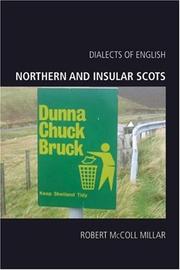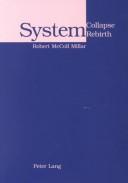| Listing 1 - 10 of 18 | << page >> |
Sort by
|
Book
ISBN: 1299105629 0748664386 9780748664382 9780748641802 9780748641819 9781299105621 0748641807 0748641815 9780748664399 0748664394 9780748664405 0748664408 Year: 2012 Publisher: Edinburgh Edinburgh University Press
Abstract | Keywords | Export | Availability | Bookmark
 Loading...
Loading...Choose an application
- Reference Manager
- EndNote
- RefWorks (Direct export to RefWorks)
Sociolinguistics provides a powerful instrument by which we can interpret the contemporary and near-contemporary use of language in relation to the society in which speakers live. Almost since the beginning of the discipline, however, attempts have been made to extrapolate backwards and interpret past linguistic change sociolinguistically. Some of these findings have influenced the discussion of the history of the English language as portrayed in the many textbooks for undergraduate courses. A consistent application of sociolinguistic theory and findings has rarely been attempted, however, des
English language --- Sociolinguistics --- Social aspects. --- History. --- Variation. --- Language and languages --- Language and society --- Society and language --- Sociology of language --- Social aspects --- Sociological aspects --- Language and culture --- Linguistics --- Sociology --- Integrational linguistics (Oxford school) --- Dialects --- Englisch. --- Historische Sprachwissenschaft. --- LANGUAGE ARTS & DISCIPLINES --- Sociolinguistics. --- Soziolinguistik. --- General. --- Variation --- History --- Dialectology --- Historical linguistics --- Germanic languages

ISBN: 0748651527 9786610762491 1280762497 0748629963 9780748629961 9780748651528 0748623167 9780748623167 661076249X 9781280762499 9780748623167 0748623167 0748623175 9780748623174 Year: 2007 Publisher: Edinburgh Edinburgh University Press
Abstract | Keywords | Export | Availability | Bookmark
 Loading...
Loading...Choose an application
- Reference Manager
- EndNote
- RefWorks (Direct export to RefWorks)
The Scots dialects of northern Scotland Orkney and Shetland are among the most traditional varieties of English. Northern and Insular Scots provides an approachable description of the phonological structural and lexical natures of these varieties and a history of the varieties in relation to the areas in which they are spoken.
English language --- Germanic languages --- Dialects --- Provincialisms --- English language - Dialects - Scotland, Northern
Book
ISBN: 1474416896 1474416888 9781474416887 147441687X 9781474416870 1474416861 9781474416863 Year: 2022 Publisher: Edinburgh
Abstract | Keywords | Export | Availability | Bookmark
 Loading...
Loading...Choose an application
- Reference Manager
- EndNote
- RefWorks (Direct export to RefWorks)
A textbook overview of the structure, use and diversity of Modern Scots This textbook overview of Modern Scots provides a description and analysis of the language covering lexical, phonological and structural patterns. It presents evidence for the diversity of the language through illustrations from newly collected fieldwork material. Frequent, detailed analysis of local variation and dialect is combined with a central focus is on the overall patterning of Scots. McColl Millar also examines the present and future of Scots, considering both its use in literature and other media and ongoing language policy and planning.A dedicated chapter introduces the reader to the various research methods and available resources – including corpora, atlases and dictionaries – and provides guidance on how to use them effectively. Each chapter concludes with a series of exercises to complete and issues to discuss, encouraging active engagement and development of skill and knowledge in relation to the subject matter. This textbook offers a practical and engaging survey of Modern Scots making this an essential resource, aptly structured for course use . Key FeaturesProvides analysis of the structure and use of Modern Scots Presents complex material for student use Maps out similarities and large-scale patterns in a clear and accessible way Includes chapters on lexis, phonology, grammar and sociolinguisticsIncludes exercises, issues for discussion and guided suggestions for further reading
Scots language. --- English language, Scots --- Lallans language --- Lowland Scots language --- Scots English language --- Scottish language (Germanic) --- English language --- Germanic languages --- Dialects --- Schottisch.
Multi
ISBN: 9781474409087 9781474409094 9781474409100 1474409091 1474409105 1474409083 1474431909 1474426786 Year: 2016 Publisher: Edinburgh Edinburgh University Press
Abstract | Keywords | Export | Availability | Bookmark
 Loading...
Loading...Choose an application
- Reference Manager
- EndNote
- RefWorks (Direct export to RefWorks)
Presents a new approach to issues of language and dialect contact.
Much has been written on dialect formation through contact between dialects of the same language, but the question of what happens when closely related but linguistically discrete varieties come into contact with each other has largely been neglected.
Here Robert McColl Millar sets out to redress this imbalance, giving the reader the opportunity to analyse and consider a variety of different contact scenarios where the language varieties involved are close relatives and to explore the question: are the results of contacts of this type different by their nature from where linguistically distant (or entirely different) varieties come into contact?
Bringing together the diverse theoretical positions associated with the production of new dialects as well as those associated with contact between closely related but discrete language varieties, the volume invites the reader to evaluate different scholarly views using analysis from a range of different case-studies, largely derived from the history and diversity of English. It then goes on to demonstrate the similarities in process and end result between contact involving discrete but closely related languages and between dialects of the same language, and in doing so offers a new and insightful approach to issues of language contact.
Dialectology --- Historical linguistics --- English language --- Languages in contact. --- Dialectology. --- Dialects --- Language and languages --- Areal linguistics --- History. --- Germanic languages
Book
ISBN: 1474448569 1474448542 Year: 2020 Publisher: Edinburgh : Edinburgh University Press,
Abstract | Keywords | Export | Availability | Bookmark
 Loading...
Loading...Choose an application
- Reference Manager
- EndNote
- RefWorks (Direct export to RefWorks)
Robert McColl Millar examines how language has been used in Scotland since the earliest times. While primarily focusing on the histories of the speakers of Scots and Gaelic, and their competition with the encroaching use of (Scottish) Standard English, he also traces the decline and eventual 'death' of Pictish, British and Norn.
Sociolinguistic --- Languages in contact --- Scots language --- English language, Scots --- Lallans language --- Lowland Scots language --- Scots English language --- Scottish language (Germanic) --- English language --- Germanic languages --- Areal linguistics --- History. --- Dialects
Book
ISBN: 9780230232556 Year: 2010 Publisher: New York, NY : Palgrave Macmillan,
Abstract | Keywords | Export | Availability | Bookmark
 Loading...
Loading...Choose an application
- Reference Manager
- EndNote
- RefWorks (Direct export to RefWorks)
English language --- English language --- Historical linguistics. --- Grammar, Historical. --- History.
Book
ISBN: 9781474448567 1474448569 9781474448574 1474448577 9781474448543 1474448542 Year: 2022 Publisher: Edinburgh
Abstract | Keywords | Export | Availability | Bookmark
 Loading...
Loading...Choose an application
- Reference Manager
- EndNote
- RefWorks (Direct export to RefWorks)
Digital
ISBN: 9781474448567 Year: 2020 Publisher: Edinburgh Edinburgh University Press
Abstract | Keywords | Export | Availability | Bookmark
 Loading...
Loading...Choose an application
- Reference Manager
- EndNote
- RefWorks (Direct export to RefWorks)
Sociolinguistics --- Galican language --- Scotland
Digital
ISBN: 9780748629961 Year: 2007 Publisher: Edinburgh Edinburgh University Press
Abstract | Keywords | Export | Availability | Bookmark
 Loading...
Loading...Choose an application
- Reference Manager
- EndNote
- RefWorks (Direct export to RefWorks)

ISBN: 3906765997 082045317X Year: 2000 Publisher: New York, NY ; Bern : Peter Lang,
Abstract | Keywords | Export | Availability | Bookmark
 Loading...
Loading...Choose an application
- Reference Manager
- EndNote
- RefWorks (Direct export to RefWorks)
ENGLISH LANGUAGE --- MIDDLE ENGLISH --- ENGLISH LANGUAGE --- MIDDLE ENGLISH
| Listing 1 - 10 of 18 | << page >> |
Sort by
|

 Search
Search Feedback
Feedback About UniCat
About UniCat  Help
Help News
News